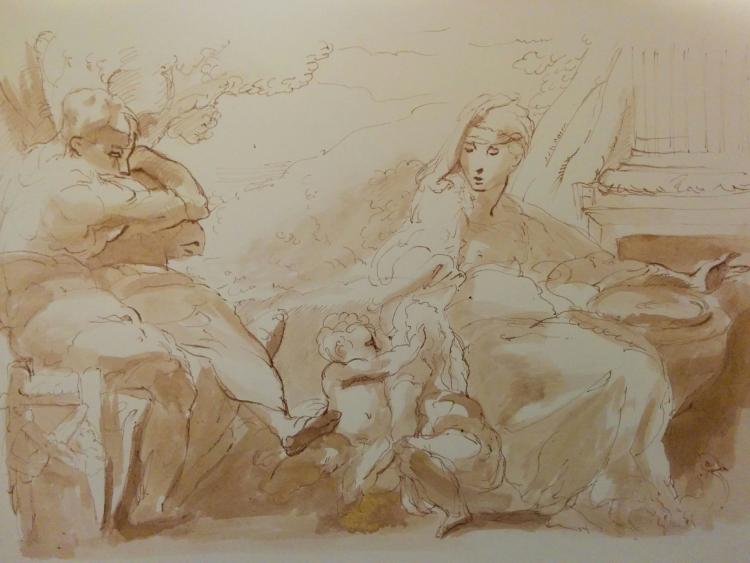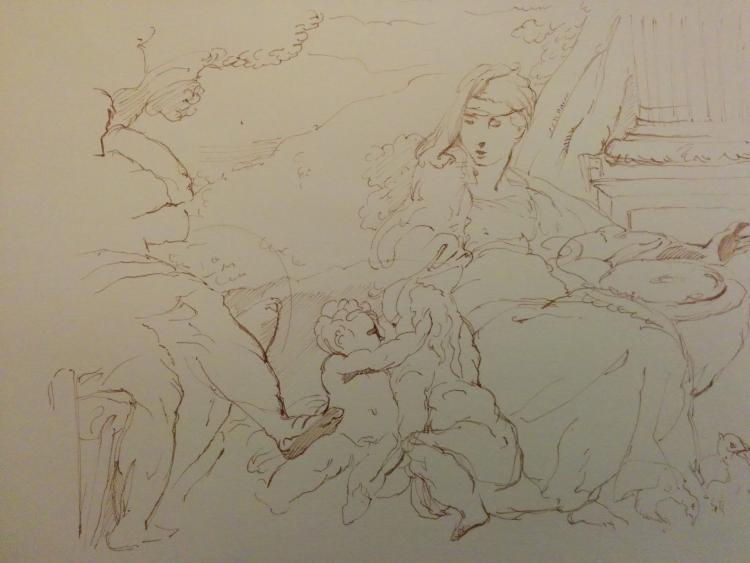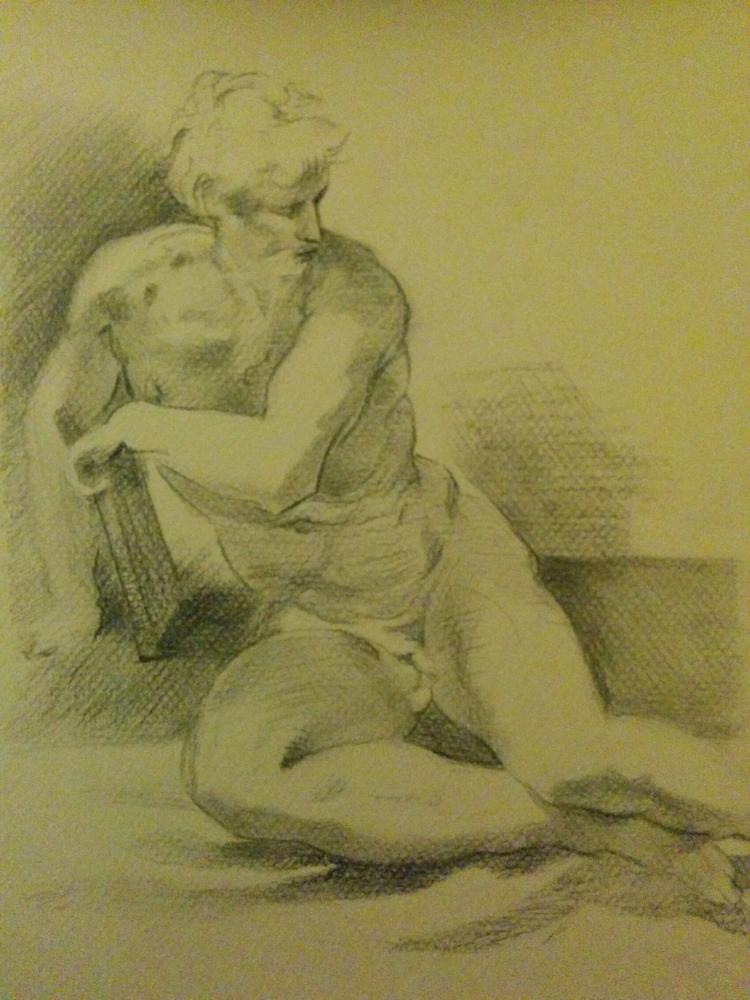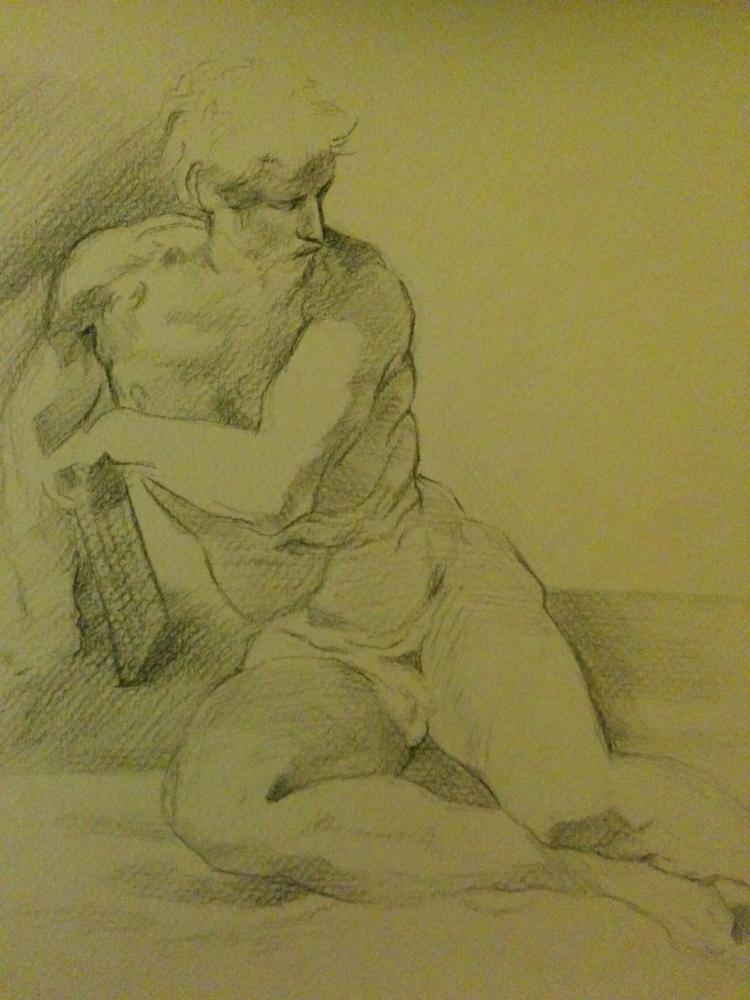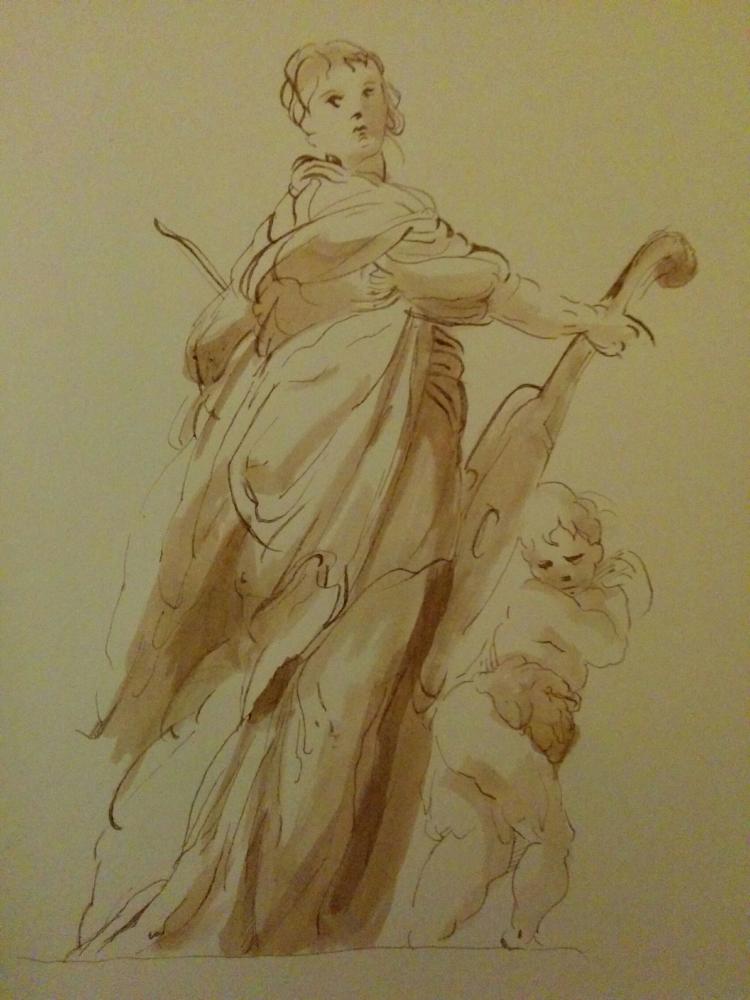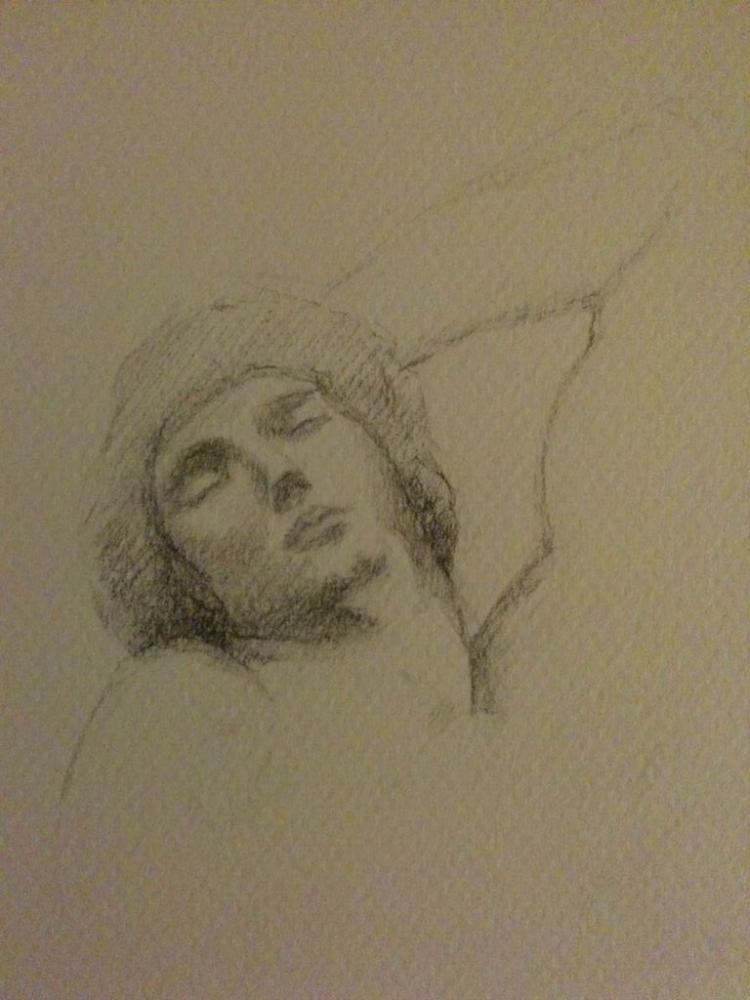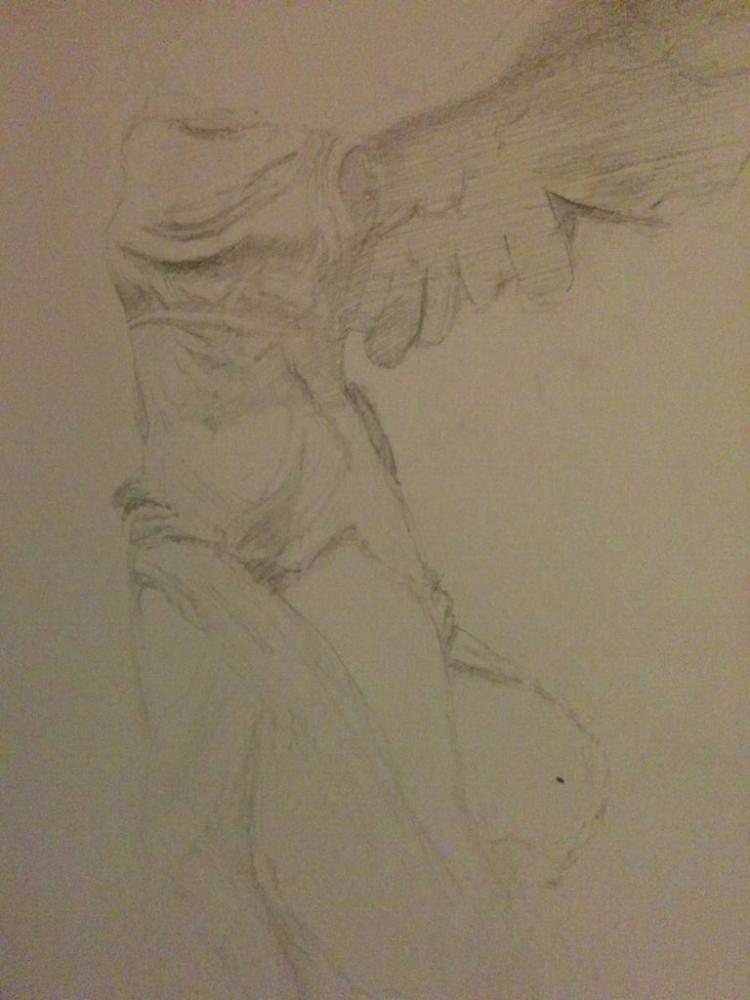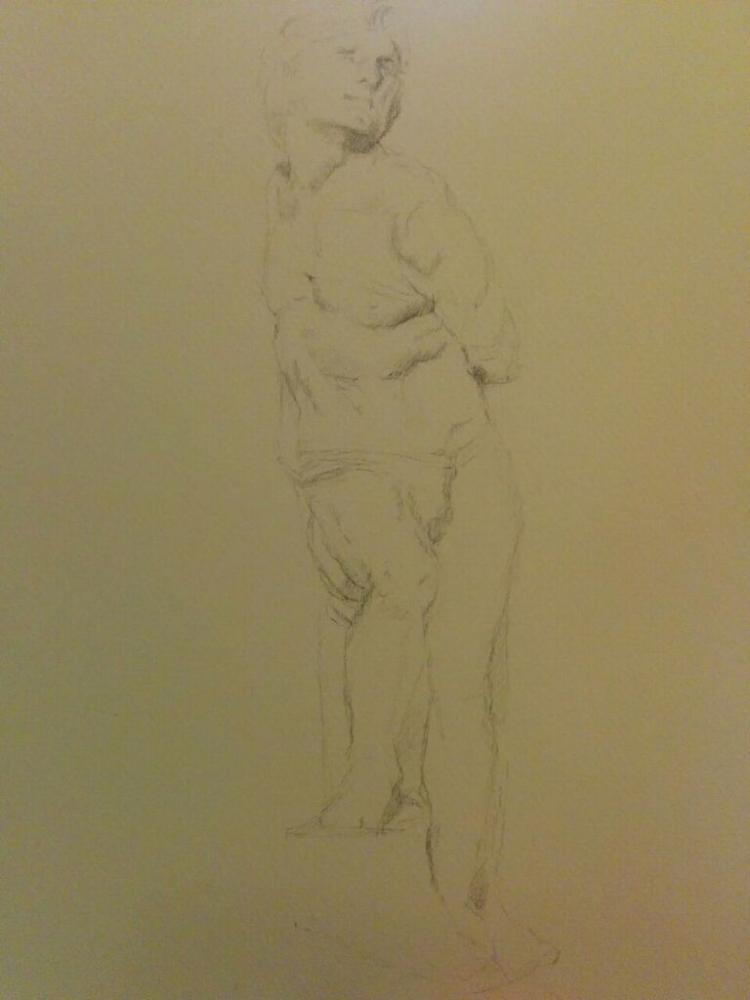It was a sunny day in Paris so I decided to go to the Musee de l'Orangerie to look at the Monets under good light. There are two rooms each containing four large panoramic views of water lilies. They are similar to the ones I saw at MoMA in New York, but it was mercifully less crowded.
I set off, ready to feel some kind of transcendent admiration and to be thrown into an exalted and contemplative calm when I got there. Actually, I accidentally achieved this state of nirvana on my stroll through the Tuileries, soothed by the sun, enriched by a morning with Victor Hugo's Les Misérables, and glutted with baguette, cheese and coffee. By the time I got to Monet, I hadn't any higher state to move in to.
And so the enraptured soul took a breather and gave the reigns over to the critical faculties for a bit.
I felt like I couldn't give myself in to the paintings. Whilst the beautiful colour harmonies, the textures, the immersive scale were not lost on me, I couldn't help but think how far short all of our art falls of the nature they seek to depict. Yes, there is something of an impression of water, reflections, willow trees, foliage, lillies in these paintings. But is that impression enough? Sometimes it is, but if you have just walked past a string of ornamental ponds glistering in the sunlight to see those pictures, you can't help but notice how absurdly different the two experiences are. In fact, the impressions of the real pond and the real light and the impression of the painting are almost wholly incongruent. Outside, there is multiplicity, movement, potentiality, meaning, sensation, wet, fractal reflections, breezes, tensions, ripples, patterns and counter-patterns, waves inside and on and over waves, depths, life. Inside, there is dried paint on a two-dimensional surface. As someone on TripAdvisor said, it's just 'very expensive wallpaper'.
Now this isn't my criticism of Monet. I don't know how else you can hope to represent water with paint. This is a recapitulation of the thoughts I have been having about the way we have to think to appreciate art. We have to forget the real world and take the art on its own terms, and build up from that. We have to accept the system of art, understand it, understand the rules and the decisions of the artist and the hurdles that had to be overcome to make it. The minute we try to compare artwork with the reality it descends from we realise there is no comparison to be made; the two are too different in every way.
This is not a sudden disaffection from art. It is a refinement of how I understand our relationship with it. I've always known it is an artificial system that keeps us busy and takes our mind of things (like sport, music, jobs, pets, politics), and that's okay. In fact, it's a pretty good distraction, and when it works, it works well. So I plunged myself gladly back into the system and went to the Louvre for the quiet of the late night opening. I saw antique bronze statuettes, and finished off the half of the Grande Galerie that I didn't look at before. Everything was quite in order, and I had the appropriate number of profound thoughts and sensations.
All that cogitating and egotistical, self-serving dilettantism over, I returned home for some exceptionally sloppy work on my drawing. I went through the motions, not thinking or applying myself properly. I don't feel engaged with it. Much more interested in all the literature I'm reading at the moment. Between art and literature, what can capture life the better? What is the more creative? What can move you more? Books! Books, I'm sure of it. Literature has the fourth dimension, art (with some exceptions) does not. You can be carried away, sucked into an alternate life that unwinds before you. What is more powerful than narrative?
